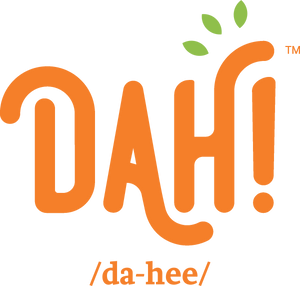Delish: Padma Lakshmi Wants You to Fall in Love with Lassi
Posted on
Padma Lakshmi wants to bring lassi—a yogurt-based Indian drink—to the American public. She has partnered with DAH! (pronounced daa-hee), an Indian-inspired yogurt company to release a new lassi flavor: tomatoes with mixed berries, inspired by her children's book, Tomatoes For Neela. She chatted with Delish about the new flavor, how she enjoys it, and all her Thanksgiving plans.
Tell me about the partnership with DAH!
I was sent some DAH! products and didn't think much of it. I had my nephews over, and I served them some of the lassi. I noticed that they kept going back into the fridge and getting more, pouring themselves glasses as a snack. So then I tasted it, and I thought they were really rich and delicious and still had some of the tartness I associate with Indian yogurt. I also did some cooking with them. I've used their products in a lot of my recipes over the last couple of years.
How did you come up with the flavor tomatoes with mixed berries?
For us in India, yogurt is predominantly a savory addition to our table. The concept of having savory yogurt is one that I've grown up with. So, I wanted to introduce the American public to savory yogurt. But I understand that for a lot of American palates, it may be a new thing. Tomato is a fruit, but we use it as a vegetable. I always thought tomato paired really beautifully with yogurt. Pairing tomato with mixed berries adds a savory depth and tartness to the yogurt, but it also has tartness itself. Because I have a children's book coming out as well, I thought it would be a neat way to give the flavor a little bit of a boost tied into the book, see if kids respond to it. And if they do, then try some other things and push the envelope a little bit more flavor-wise.
How do you like to enjoy it?
I drink it for breakfast. Or sometimes I'll feel a little hungry right before bed, so I'll sip some as a late night snack. But I've also frozen it in a readymade pie shell and put berries on top and have like a frozen yogurt pie.
Let's switch gears a bit. The holidays are coming up. What does your typical Thanksgiving table look like?
I do a pretty traditional Thanksgiving turkey, slow roasted in the oven. And I make gravy out of the pan drippings. We tend to have sweet potatoes, green beans, mashed potatoes, and stuffing. There are staples we do in different ways. We tend to switch up the ethnicity of the side dishes every year. One year, we'll do Moroccan, so we'll have preserved lemons that are chopped up and sautéed with butter and shallots. I put those over blanched green beans with some shaved almonds. And then I'll use harissa in the mashed potatoes. If I'm roasting vegetables or sweet potatoes, I'll add Ras El Hanout, a North African-Moroccan spice blend. Sometimes I'll do a Chinese version of stuffing, which is actually a rice stuffing with Chinese sausage and mushrooms; an old friend taught me how to make it. We tend to use the same main staple ingredients for side dishes, but we make them into new recipes every year.
Do you have any holiday comfort foods?
I like to make a lot of gravy, which is why I add water to the roasting pan so that I have enough pan juices. I take leftover turkey and make turkey pot pie. It's one of my favorite things to do. In fact, I like that more than the actual turkey. I'll use whatever leftover vegetables, including already roasted vegetables that we have, and I'll put that with the chopped up turkey meat, add some more carrots or fennel or celery as needed, make a crust, pour the gravy in, and then put it in the oven for an hour.
Is there anything that you won't serve for Thanksgiving?
I don't like canned cranberry sauce. To be honest, I don't even really like cranberry sauce, except I like my cranberry chutney, which a great aunt taught me how to make. It's a very spicy chutney. The cranberries have so much inherent tartness and sourness to them that you have to add a lot of sugar. And then you add mustard seeds and other spices, and that serves as our cranberry dressing.
What are looking forward to this Thanksgiving?
I hope that this Thanksgiving, people take time to understand that Thanksgiving and the whole exercise of being with our family and expressing gratitude is a concept that we have taken as a country from Indigenous Americans. Considering everything that the various First Nations of this country have gone through, I think it would be helpful if we remembered all of that when we are sitting down to a bountiful table with our family at Thanksgiving, it is the Indigenous community that taught us this beautiful ritual of gratitude and it comes from their culture.
